As small UAS (drones) become more capable and ubiquitous, there will be a focus on maturing and developing the means of storage, carriage, and deployment. Moving on from Peli cases and foam cutouts, these systems will be increasingly treated as a round of ammunition or missile; stored on shelves, moved on pallets, and attached to all manner of crewed and uncrewed vehicles, ships, helicopters, and aircraft.
Inevitably, this leads to having them in tubes (or canisters).
Tube launching does add some complexity due to the requirement to incorporate a wing folding mechanism and wing form/span will be limited by the interior dimensions of the tube. This will limit the performance of the UAS. These limitations mean that an extreme altitude and long endurance design is unlikely to be possible, but for the most common battlefield applications, achievable.
The most obvious constraining dimension is that of a NATO standard sonobuoy.
This would not only allow them to be deployed by maritime patrol aircraft such as the RAF’s new P-8s. Industry treats this as a ‘standard dimension’.
There are several sonobuoy dimensions, A to G.

They can be gravity or pneumatically launched, singly or in a rotary magazine, and the most common are A, F and G. The Image below shows A size sonobuoy being loaded into a rotary launcher onboard a US Navy P-8A

And below, being loaded onto the aircraft.

For carriage on large uncrewed aircraft like the General Atomics Predator (Protector), Harris has developed a pod-based sonobuoy launcher.
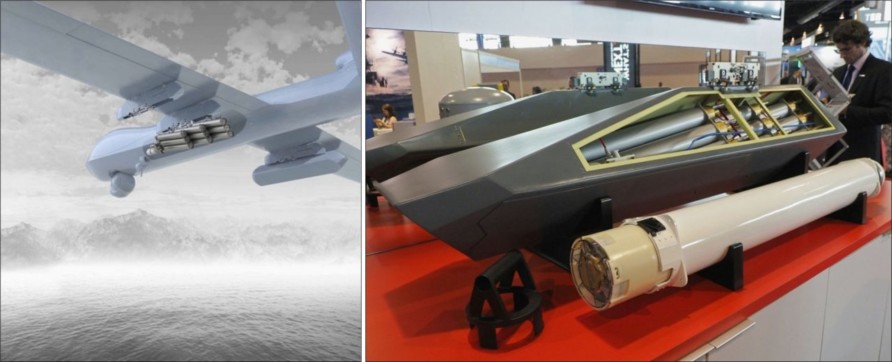
Exploiting sonobuoy launch systems for UAS is not a new idea, in 2004, the U.S. Navy’s Office of Naval Research (ONR) released a requirement for an expendable sonobuoy dispenser launched UAV for P-3C Orion aircraft, to be used for hurricane research. The result of this was the Advanced Ceramics Research Coyote, now more commonly known as the Raytheon Coyote.
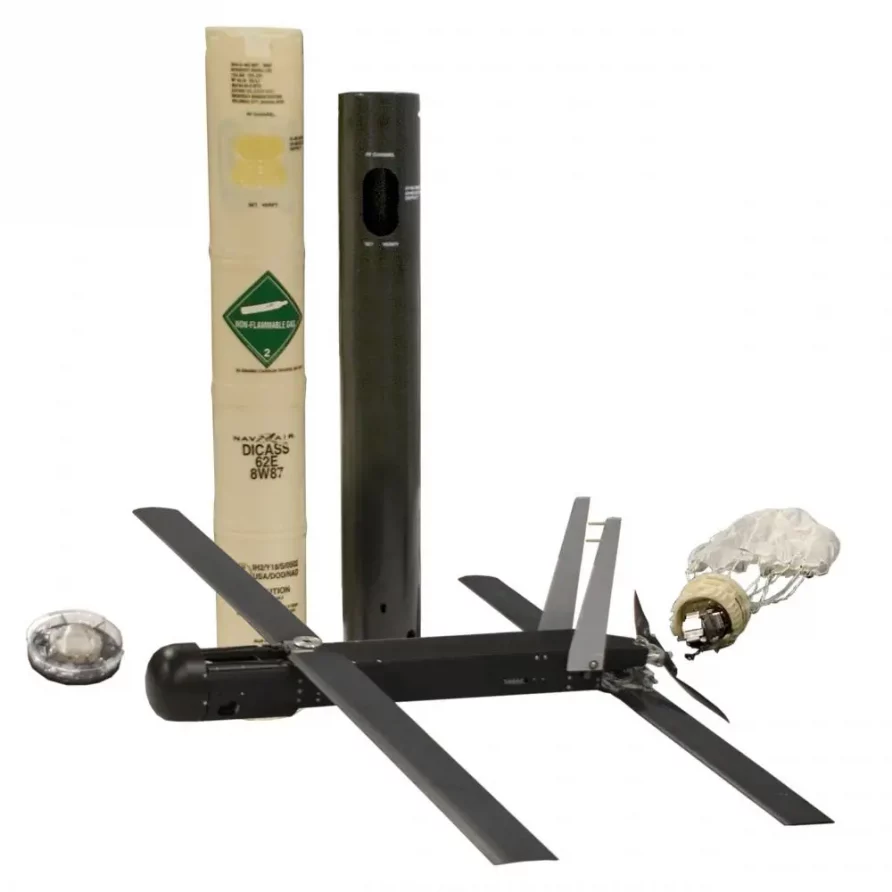
The Block 2 iteration uses a larger jet engine-powered design but the Block 3 uses the same folding wing tube-launched configuration as the original. Lockheed Martin also makes a training target that is sonobuoy dispenser launched, the snappily titled MK 39 Expendable Mobile ASW Training Target and Field Programmability System.
In the UK, Ultra Electronics design and manufactures sonobuoys for the Royal Navy (and others), and have shown concepts for pod-launched sonobuoys.
Given the amount of research effort into making launch systems for sonobuoy 123.9 mm diameter sensors and UAS, is it reasonable to exploit this in the land domain?
This allows warheads, electronics, and guidance systems developed for 120 mm mortars, artillery, and tank ammunition to be re-used without expensive re-engineering. Where this is a problem is warhead diameter, NLAW and Javelin, for example, exceed 123.9 mm, therefore negating any re-use opportunities and reducing effectiveness (given shaped charge diameter has a direct relationship to penetration)
Another option is the Submerged Signal Ejector (SSE) used for pyrotechnics, electronic, and countermeasures payloads on submarines. These use either 76 mm or 100 mm payloads.

Read more about these from the Denis Farranti Group in Wales.

As far back as 2011, the National Technical University of Ukraine (NTUU KPI) and the State Kyiv Design Bureau Luch developed an ATGW tube-launched UAS called SOKIL-2.
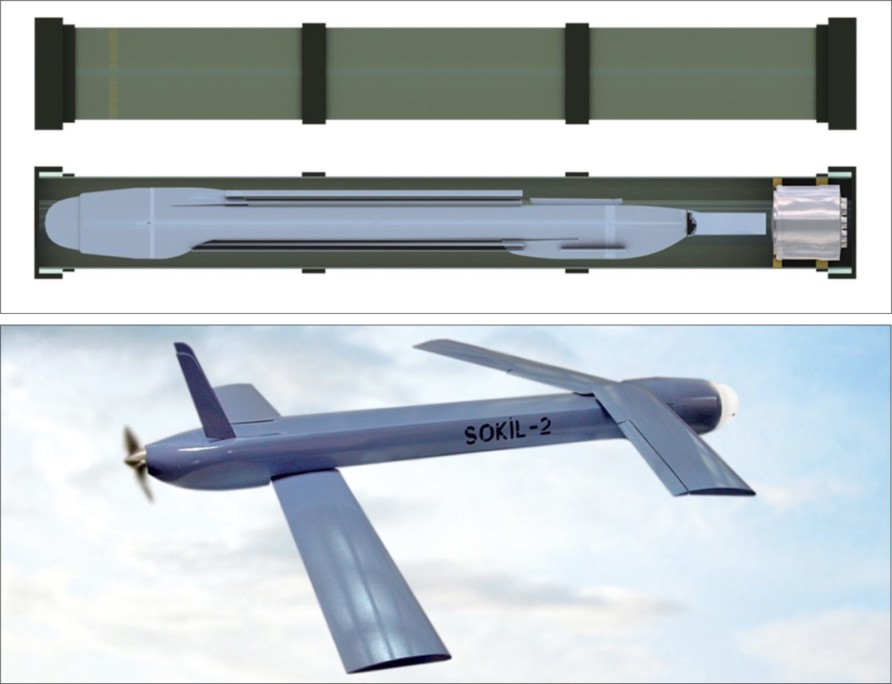
SOKIL 2 had a design range of 20 km and endurance of 1.5 to 2 hours.
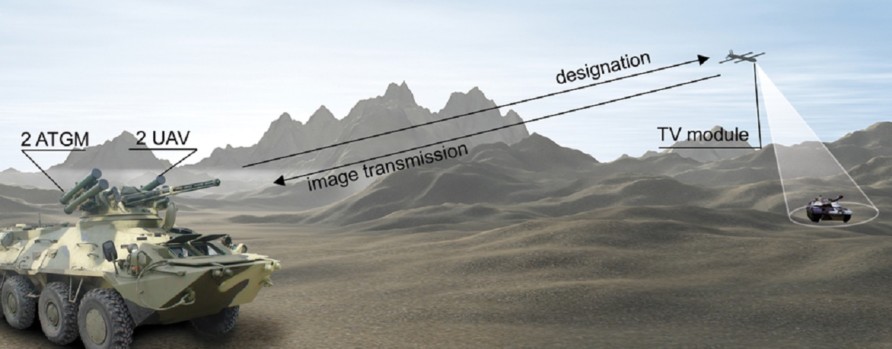
At 160 mm in diameter, too large for a Class A/G Sonobuoy launch tube.
Area-I has opted for the 150 mm for their Altius 600 that has been demonstrated launching from several ground vehicles and aircraft (and will also be doing the hurricane hunting stuff as well). Lockheed Martin has also taken an Altius 600 and added a High-Power Microwave (HPM) for use in the counter-UAS role, called MORFIUS.

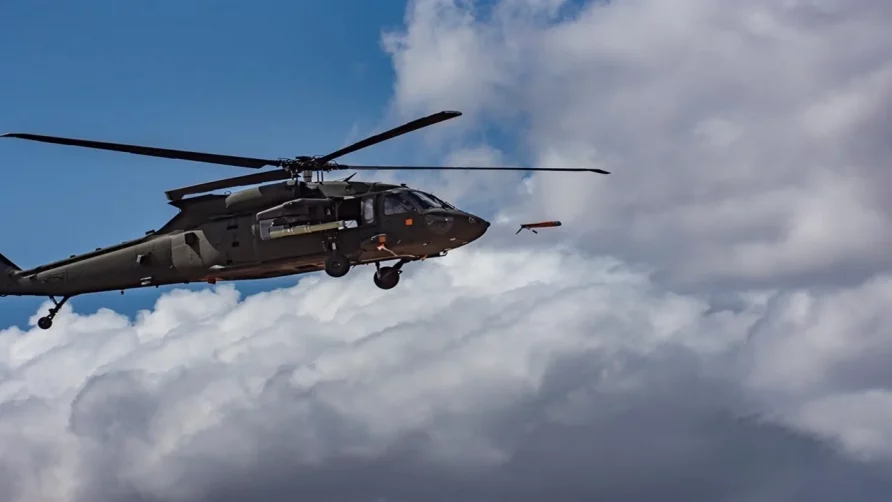
The more famous Switchblade 300 and 600 go for 3 inches (ca. 8 cm) and 6 inches (ca. 15 cm) in diameter, respectively.
Before reading on, would you mind if I brought this to your attention?
Think Defence is a hobby, a serious hobby, but a hobby nonetheless.
I want to avoid charging for content, but hosting fees, software subscriptions and other services add up, so to help me keep the show on the road, I ask that you support the site in any way you can. It is hugely appreciated.
Advertising
You might see Google adverts depending on where you are on the site, please click one if it interests you. I know they can be annoying, but they are the one thing that returns the most.
Make a Donation
Donations can be made at a third-party site called Ko_fi.

Think Defence Merch
Everything from a Brimstone sticker to a Bailey Bridge duvet cover, pop over to the Think Defence Merchandise Store at Red Bubble.
Some might be marked as ‘mature content’ because it is a firearm!
Affiliate Links
Amazon and the occasional product link might appear in the content, you know the drill, I get a small cut if you go on to make a purchase
Closer to home, the Lockheed Martin Outrider has been around for a few years and was designed for submarine, helicopter, and vehicle launch using the Submerged Signal Ejector diameter (100 mm) as the constraining dimension.
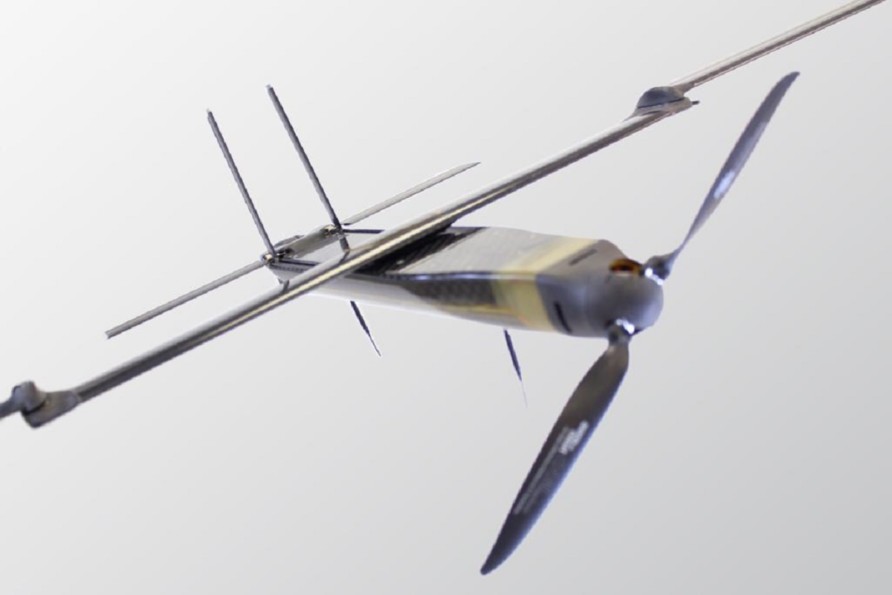
It has a couple of hours of endurance and a range of up to 20 km. It is also ITAR-free, and totally home-grown in the UK. Outrider only carries a sensor payload, nothing explosive.
Outrider is a brilliant concept, and the fact that it is the UK developed is even better.
Lockheed Martin UK is still developing the concept, using Outrider as the base air vehicle for a rocket deployed system, the Dispensing Rocket Payload Demonstrator.

There are three variants, an armed version, an electronic decoy, and finally, a plain old ISTAR version.

Design choices on a diameter are interesting, lean towards sonobuoys at 123.9 mm, go smaller at 75 mm (Switchblade 300) or larger at 150 mm (Switchblade 600, Altius 600 etc.).
Or stick with Outrider at 100 mm?
To show how this might work with an MLRS rocket at 226 mm diameter, the diagram below shows 75 mm, 100 mm (Outrider and SSE), 124 mm (Sonobuoy) and 150 mm.

Outrider seems to sit in the sweet spot for MLRS rocket carriage whilst still being compatible with sonobuoy launchers with a suitable adapter casing.
Using a tube launcher approach allows small disposable UAS to be treated as a munition, and this is a Good Thing
We should get behind Outrider, it makes all kinds of tri-service sense.
A single multi-payload device that can be launched from a Boxer, a Merlin, an Astute, a GMLRS rocket, a Poseidon, an Apache, a Jackal or Protector would be a big deal, with enormous potential.
Another constraining dimension worthy of consideration is the length of the tube or canister, especially when considering palletisation.
The images below show the MIL-STD 3028 JMIC

The maximum internal height is 842 mm, allowing extremely efficient vertical packing. This might also open the possibility of using the JMIC as a Vertical Launch System (VLS), a quick calculation shows a single JMIC would be able to house forty-eight vertical 100 mm diameter tubes with a generous allowance for housing and spacing.
Although the length of Outrider does not seem to be published anywhere, expect it will be less than this.
i.e., a self-contained swarm launcher
Finally, let me leave you with this video and link
We have great engineers in the UK, let’s not be buying from elsewhere.
PS
Brite Cloud is 55 mm
Discover more from Think Defence
Subscribe to get the latest posts sent to your email.


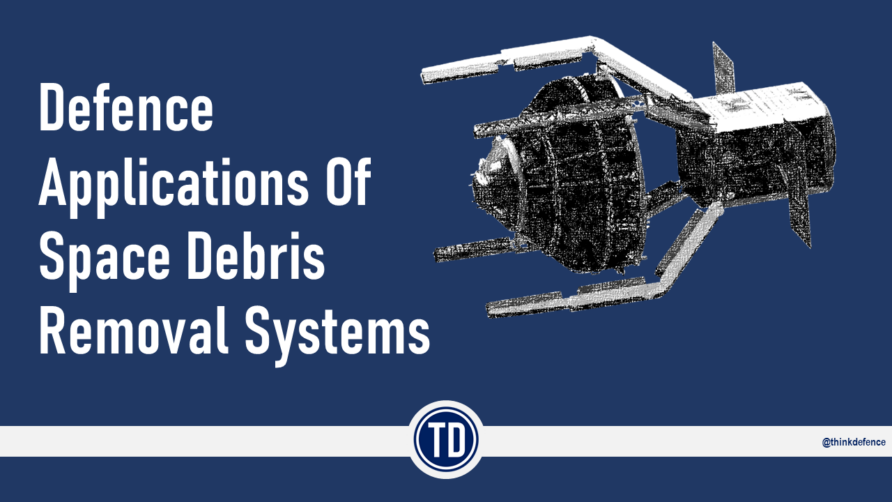


What is important is whether it is a single service or whether it can be collected and reused and the price.
Personally opinion; I would go
Anti-infantry – hero 30
Anti-tank – hero 120
Both can recover and re-used repeating if not dangerous threat acting as recon or not target and return to safe line.
Outsider is interested proposal.. I think it is good stuff and my two question is can they do laser target designator for nlos (akaron mp) or laser-guide weapon (paveway iv or brimstone or spear etc)? And they can recovery + reused?
I think orbitor 4 vtol long loither time (12-24 hours) and long range / xev-30 stalker short range (6-8 hours) might better support squadron/platoon or battation as time loiters and laser weapon also Indago 4 or ghost for back bag carrier.